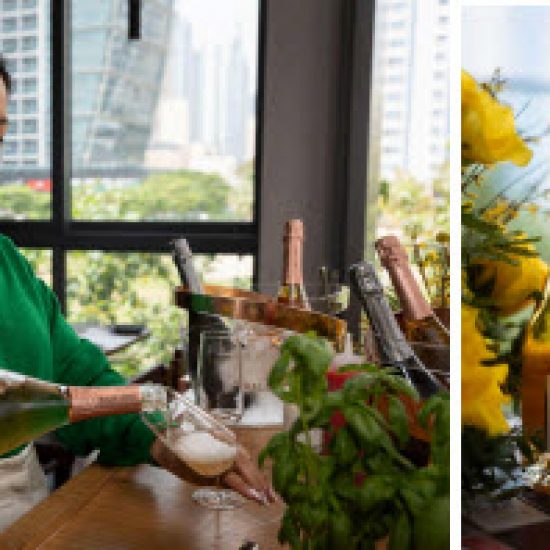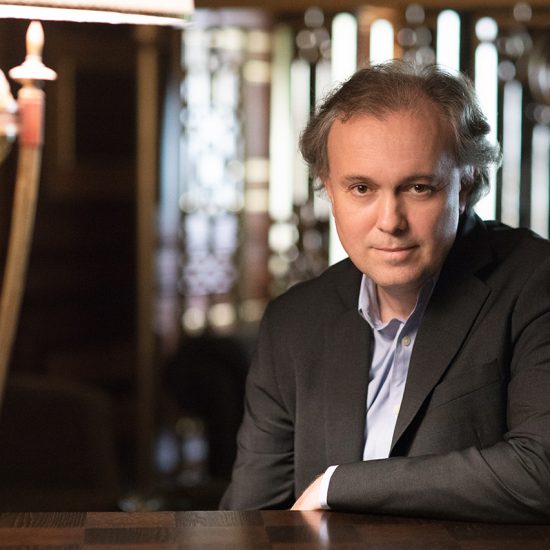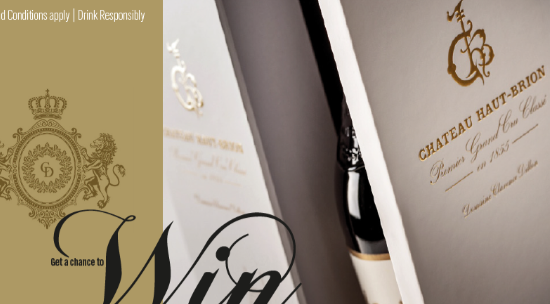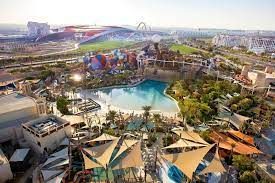
At 38 years and counting, the clock is ticking against the famed environmental artist for his proposal to create the world’s largest sculpture in the UAE desert.
Even though many of Christo’s memories may be cherished, not every anniversary is a cause for celebration.
“I am not a masochist, I don’t like to spend 38 years working on this project,” says the white-haired artist who wrapped the Reichstag in Berlin, as he reflects on his proposal for the world’s largest sculpture, The Mastaba.
A brightly-coloured ziggurat made from 410,000 250-litre steel barrels, Christo has designed The Mastaba to measure 150 metres high, 225 metres deep and 300 metres wide, creating an edifice that would dwarf even the largest of Egypt’s ancient pyramids after which it is named.
The 81-year-old has been pitching the project to the authorities in Abu Dhabi since he first came to the country in 1979, which is a record even by his own prodigious standards.
The Gates, the Central Park project that Christo and his collaborator and wife, Jeanne-Claude, executed in Manhattan in 2005, was the product of 26 years of preparation and negotiations; Wrapped Reichstag took 24.
The experience of bringing these works into being have made Christo a man of seemingly endless optimism and patience, determined to pursue the realisation of The Mastaba despite his advancing years.
His resolve, he insists, was strengthened further in January when he decided to walk away from the Colorado-based Over the River, a project that had been in preparation for 25 years and had already cost the artist US$15 million (Dh55m) in research, testing and planning.
As with the rest of his projects, Christo had funded Over the River through sales of his smaller artworks, the paintings and mixed-media collages sold to private collectors and museums that will be his only permanent legacy unless his plans for The Mastaba are realised. Now, for the first time in decades, the Abu Dhabi project represents Christo’s sole sculptural ambition.
“Each project has its own story and now this is the only project I have in mind and in one way that offers a kind of relief,” he says. “The Mastaba has been pushed to one side on several occasions but now I want to dedicate all my time to it because it’s my longest-living project.”
The UAE chapter of The Mastaba epic began in February 1979, when Christo, Jeanne-Claude and their long-term collaborator, the German photographer Wolfgang Volz, came to the Emirates for the first time in search of a location.
“At that time, from 1972 to ‘79, Christo and Jeanne-Claude had already realised the Valley Curtain in Colorado, Running Fence in California and Wrapped Walk Ways in Kansas City, Missouri, and on the first trip we travelled through all the emirates,” Volz says.
“One of the amazing things that surprised me about Abu Dhabi at the time was that the cityscape was still very much sand. You would suddenly come across a little piece of desert in the middle of the city because the development then was still very uneven.”
The trio arrived as guests of the French government – all visitors to the UAE at that time required an official sponsor and invitation – but Christo and Jeanne-Claude had spent a decade exploring possible sites for a sculpture in the Netherlands and Texas, but in this rapidly modernising new nation they found an option that was a very different proposition.
“I didn’t put my finger on a map and discover Abu Dhabi,” Christo says, delving into The Mastaba’s pre-history, an extraordinary stop-start story of chance, circumstance, friendship and art history.
“From the late 1950s, I had been working with barrels and then we did the rue Visconti in Paris, [Wall of Oil Barrels – The Iron Curtain, 1962] and then, in the mid 1960s I did a small sculpture in Milan and for the first time we stacked the barrels horizontally and created The Mastaba.”
After a brief period of activity in the mid-1960s, when Christo and Jeanne-Claude explored sites around Houston with John and Dominique de Menil, art collectors, patrons and heirs to the Schlumberger oil dynasty. The project was paused only to be restarted in 1972, when the couple were visited by Louis de Guiringaud, an art collector and friend of Jeanne-Claude’s father who was then serving as France’s permanent representative to the United Nations in New York.
Seeing Christo’s study drawings for the unrealised mastabas in Texas and Holland, Mr de Guiringaud told the artist about a new nation, the United Arab Emirates, where such a project might be more openly received.
“‘Christo’, he told me, ‘Just a year ago a new nation was created in the Arabian Gulf called the United Arab Emirates by an adventurous Bedouin from the desert, Sheikh Zayed Al Nahyan, who is imaginative and this might be the chance to move this project to a new place’.”
On the election of Valery Giscard d’Estaing as the president of France in 1976, Mr de Guiringaud became the French minister of foreign affairs and it was in this capacity that the politician arranged for Christo and Jeanne-Claude’s first UAE visit. “I didn’t have the slightest idea about Abu Dhabi,” the artist remembers. “And all of the maps in the bookstores still mentioned the Trucial States. But it was then, in the mid-1970s, that I first began to consider the desert as a possible location.”
From 1979 until 1984, a period when Christo and Jeanne-Claude were also working on the preparations for wrapping the Pont Neuf in Paris and the project known as Surrounded Islands, which involved the artists wrapping 11 islands in Miami’s Biscayne Bay, they also visited the UAE repeatedly and thought they had found a possible site south of Al Ain.
Thanks, however, to the demands made by the planning and execution of projects such as The Umbrellas, which was mounted simultaneously in Japan and California in 1991, Berlin’s Wrapped Reichstag, which took place in 1995, and The Gates in New York’s Central Park, the couple did not revisit The Mastaba until 2005 when their negotiations with authorities in the US appeared to have reached a deadlock and the future of Over the River appeared to be in doubt.
As Christo remembers, it was then that Jeanne-Claude suggested a return to Abu Dhabi, a journey that not only led to a change in the proposed location for The Mastaba – Christo now wants to build it in the dunes of the Western Region, not far from Hameem – but also persuaded the couple to take the project a stage further by conducting the research that would turn their sculptural vision into a buildable reality. To do this, Christo and Jeanne-Claude hired the services of four of the world’s most prestigious engineering schools.
“By 1979, the project was aesthetically totally defined. We knew how many barrels and what colours they should be but we only had a concept for how it might be built,” Christo says.
Hired with no knowledge of each other’s participation, teams from engineering faculties in Cambridge, Zurich, Milan and Tokyo set about devising detailed proposals for the project’s design and construction. Once these were submitted, a winning proposal was selected by an independent expert who chose the Japanese scheme.
Since 2007, Christo and his team, including Volz and Jeanne-Claude until her death in 2009, have visited the UAE at least once a year, giving interviews, lectures and public appearances. In 2012, the annual Christo and Jeanne-Claude Award was established, presented by NYU Abu Dhabi under the patronage of Sheikha Shamsa bint Hamdan Al Nahyan, in partnership with the Abu Dhabi Music and Arts Foundation with the aim of fostering emerging, UAE-based artistic talent.
But despite the ongoing charm offensive, The Mastaba remains stalled in what the artist describes as the “software period”, a phase where the project exists only in his sketches, in engineering proposals and in the minds of the people who support him. Christo, however, is an artist who is used to getting his own way, even if it does take decades, and despite his advancing years he refuses to be anything other than positive.
“Each project has its time, it’s own moment and its own journey. It took 10 years to realise the Pont Neuf and 26 for The Gates, but this project is what it is and I hope it will be realised,” he insists.
“It will give Abu Dhabi something that nobody else will have, something truly unique, and the value of that is something that cannot be measured.”
•Christo will be speaking at 2.30pm on Friday at the 2017 Global Art Forum event Trading Places: Monumental, at Art Dubai. The 1974 short film, Christo’s Valley Curtain, is being screened on Saturday at 3pm in the Global Art Forum Tent on Fort Island, Madinat Jumeira in Dubai. For more details, go to artdubai.ae.








